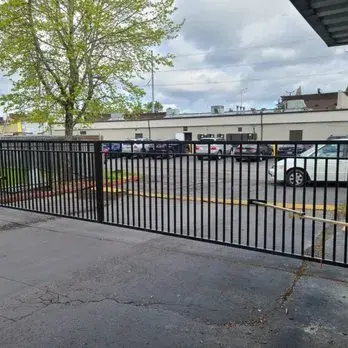
Failure to perform routine maintenance can lead to poor performance, frequent breakdowns or even premature failure.
Moreover, when issues do arise with electric gates, it’s essential to know how to troubleshoot common problems effectively. Understanding the basic workings of these mechanisms can save property owners time and money by averting unnecessary service calls or expensive replacements.
This article aims at providing expert advice on maintaining and repairing electric gates; from routine maintenance procedures that guarantee their smooth operation to troubleshooting tips for some of the most common issues faced by users. Knowledge herein serves as a valuable resource for anyone seeking insights on how to keep their electric gate operating at its best.
Regular Inspection and Maintenance Procedures
Regular inspection and maintenance procedures are integral to the longevity and efficiency of electric gates, entailing systematic checks for wear and tear, as well as routine servicing to ensure optimal performance.
Such planned routines enable the early detection and rectification of potential issues, prolonging the lifespan of the equipment while minimizing unexpected downtime.
It is recommended that these inspections encompass visual checks for physical damage or corrosion, lubrication of moving parts, safety device functionality tests, battery condition assessments in case of power outage backup systems, amongst others.
With regular maintenance schedules in place, gate operators can maintain their pristine condition over extended periods which translates into cost-effectiveness through reduced repair bills.
Furthermore, these procedures not only enhance operational efficiency but also play a critical role in ensuring user safety.
An improperly functioning electric gate could pose significant risks to people around it; therefore routine checks help safeguard against such hazards by identifying any malfunctioning components promptly.
Additionally, conducting regular system diagnostics ensures reliable operation even under varying environmental conditions; this is particularly important given that electric gates often serve as crucial elements within larger security frameworks.
Thus reinforcing a sense of belonging for all those who rely on them – be it homeowners seeking peace of mind regarding property security or businesses valuing efficient vehicular movement management within their premises.
Indeed, by promoting operational reliability and overall safety through regular inspections and maintenance practices, one reinforces communal trust invested in these devices as robust security solutions.
Troubleshooting Common Issues
Addressing and assessing common complications that can occur with automated access systems requires thorough troubleshooting techniques. Troubleshooting serves as a systematic method for identifying, diagnosing, and resolving issues that hinder the optimal performance of electric gates. In essence, this process engages a meticulous examination of various gate components such as motors, sensors, remote control units, power supply systems, and interconnecting cables to ascertain their functionality status.
Before initiating any repair procedures, it is crucial to understand the underlying problems contributing to the malfunctioning state of the gate system. Here are some common issues often encountered with electric gates:
– Inconsistent Operation: This may be due to fluctuating power supply or faulty wiring connections which affect signal transmission.
– Unresponsiveness: If an electric gate fails to respond appropriately when prompted by a remote controller or sensor inputs, there might be issues with the control board or interference in signal pathways.
– Physical Damage: Over time, wear and tear from constant use and exposure to extreme weather conditions can cause physical damage on structural elements like hinges and rollers.
Understanding these common challenges necessitates proactive measures for maintenance routines. It provides insight into potential problem areas while enabling timely interventions necessary for preserving the longevity of your electric gate system.
Bridging The Electric Divide: Comprehensive Solutions For Gate Malfunctions
